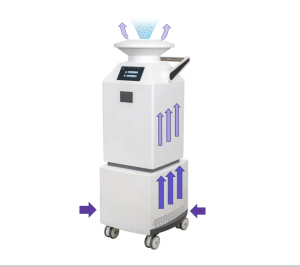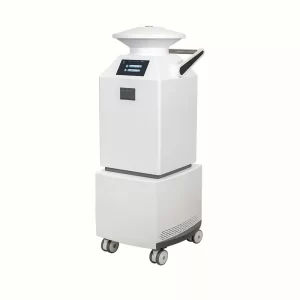When choosing a disinfection apparatus for hospitals or medical facilities, you might encounter a challenging task. The market presents a myriad of options, among which the 35% hydrogen peroxide sterilizer and the 12% hydrogen peroxide sterilizer stand out as common alternatives.
However, did you know? These two concentrations of hydrogen peroxide sterilizers exhibit significant differences across multiple aspects. Let's compare these two concentrations of hydrogen peroxide sterilizers to provide you with a clearer understanding.
yier Hydrogen Peroxide Sterilizer
Ease of Use
Firstly, it's essential to understand that the 35% hydrogen peroxide sterilizer falls under hazardous chemicals. Therefore, strict adherence to regulations is necessary during its transportation, storage, and utilization. This implies a greater investment of time and effort during purchasing, transportation, and storage processes.

On the other hand, the 12% hydrogen peroxide sterilizer, being non-hazardous, offers more convenience in both purchase and use. This factor is undeniably crucial for hospitals or medical facilities.
Corrosiveness
The corrosiveness of the 35% hydrogen peroxide sterilizer is significantly higher than that of the 12% concentration. This means that utilizing the 35% hydrogen peroxide sterilizer may cause more severe damage to equipment, thus shortening its lifespan.
Conversely, the 12% hydrogen peroxide sterilizer is relatively mild and doesn't induce corrosion during the disinfection process in hospitals or medical facilities, ensuring a safer environment for equipment.
Cost of Disinfection
Achieving similar disinfection outcomes, the cost of disinfection with the 35% hydrogen peroxide sterilizer is considerably higher than that with the 12% hydrogen peroxide sterilizer. This is primarily because the use of the 35% hydrogen peroxide sterilizer, typically of the VHP type, involves vaporizing the hydrogen peroxide disinfectant through heating.
However, during the heating process, a considerable amount of hydrogen peroxide solution decomposes into water and oxygen, neither of which contributes to disinfection. The active disinfectant is hydrogen peroxide itself. Consequently, the 35% hydrogen peroxide solution, with a lot of unusable solution, leads to wastage. As a result, it requires a significantly higher consumption of 35% hydrogen peroxide solution, at least three times more than the consumption of 12% hydrogen peroxide solution, leading to a substantial increase in consumable costs.

If cost-effectiveness is a priority in hospitals or medical facilities, choosing the 12% hydrogen peroxide sterilizer appears to be a wiser option.
In conclusion, when selecting a disinfection apparatus for hospitals or medical facilities, various factors need consideration. Lastly, regardless of your choice, ensuring compliance with the facility's GMP requirements and focusing on equipment maintenance and updates is crucial for maintaining optimal working conditions.
The aforementioned suggestions on selecting a disinfection apparatus for hospitals or medical facilities aim to assist you. If you have any queries or require further assistance, feel free to reach out anytime. Let's work together to safeguard the hygiene and safety of medical establishments!